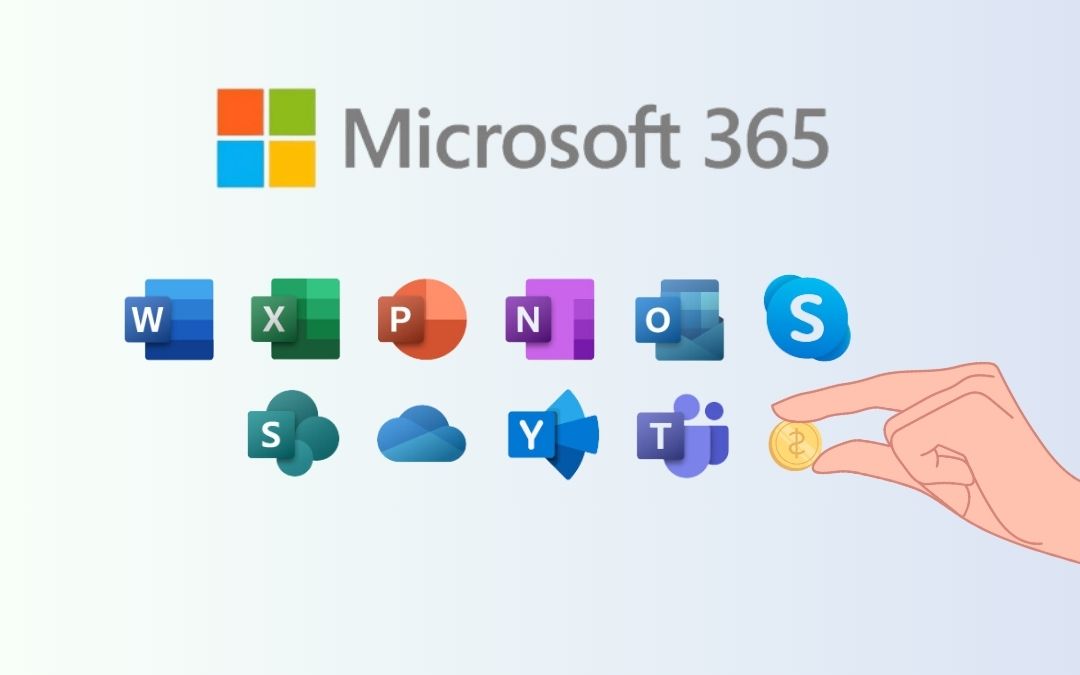
In the present era of digital connectivity, where technology plays an integral role in our daily lives, ensuring the safety and security of our data has become of utmost importance. Whether it’s personal memories stored in photos, crucial work documents, or sensitive business information, the value of our data cannot be overstated. The importance of backing up this data is widely acknowledged, yet the question that often lingers in our minds is, “How do I know if my data is backed up properly?”
This article delves into the critical aspects of data backup, providing insights into the various methods available and guiding you on how to ensure that your data is not only backed up but backed up effectively. We’ll explore the common pitfalls to avoid, essential considerations for a robust backup strategy, and the telltale signs that your data is in safe hands.
Why Do You Need to Backup Data?
Backing up your data is crucial for several reasons, and failing to do so can have significant implications. Here’s why you need to prioritize data backup:
1. Business Continuity: For businesses, data is often the lifeblood of operations. In the event of a disaster or unforeseen circumstances, having backups ensures that critical business functions can continue without prolonged downtime.
2. Protection Against Cyber Threats: In an era where cyber threats are on the rise, having a backup can protect you from ransomware attacks or other malicious activities. If your data is compromised, you can restore it from a secure backup.
3. Hardware Failures: Computers and storage devices can fail unexpectedly. If your data is backed up, you won’t lose important files or documents when hardware issues arise.
4. Software Updates and Upgrades: Sometimes, software updates or upgrades may not go as planned, leading to data corruption or loss. Having a recent backup allows you to revert to a stable version of your data.
5. Human Errors: People can make mistakes, and accidental deletions or modifications are not uncommon. Regular backups act as a safety net, allowing you to recover from human errors easily.
6. Long-Term Preservation: Data backups are essential for long-term data preservation. They ensure that historical records, important documents, and valuable information are not lost over time.
7. Compliance Requirements: In many industries, there are legal and regulatory requirements for data retention. Regular backups help organizations meet compliance standards and avoid legal consequences.
How to Verify the Successful Backup of Your Data?
To confirm the successful backup of your data, follow these steps:
1. Check Backup Logs: Review backup logs or reports provided by your backup software. Look for any errors or warnings that might indicate issues with the backup process.
2. Compare File Timestamps: Compare the timestamps of files on your computer with those in the backup destination. If the timestamps match, it suggests that the files are being regularly backed up.
3. Perform Test Restores: Regularly conduct test restores of random files or folders from your backup to ensure that the restoration process works as expected.
4. Monitor Backup Status: Many backup solutions provide real-time monitoring. Keep an eye on the status to ensure that backups are occurring regularly and without errors.
5. Use Backup Verification Tools: Some backup tools offer built-in verification features. Utilize these tools to automatically verify the integrity of your backups.
6. Check Storage Space: Ensure that the backup storage has sufficient space to accommodate your data. Lack of space can lead to incomplete or failed backups.
7. Receive Email Notifications: Set up email notifications for backup completion. This way, you’ll be promptly informed if any issues arise during the backup process.
8. Periodic Data Restoration: Periodically restore a subset of your data to a separate location to confirm that the backed-up data is intact and usable.
By incorporating these steps into your data management routine, you can maintain confidence in the effectiveness and reliability of your data backup strategy. This could be an opportune moment to verify with your existing IT department the status of your data backups and consider whether you receive notifications regarding any potential issues.
Steps to Take If the Backup Fails
If your backup hasn’t worked, take the following steps
1. Check for Errors: Examine the backup software logs or error messages for any indications of issues during the backup process.
2. Verify Source and Destination: Confirm that the source files or data and the backup destination are correctly configured.
3. Investigate Storage Issues: Ensure that the backup destination has sufficient storage space and that it is accessible.
4. Reattempt Backup: Retry the backup process manually to see if it was a one-time issue or if the problem persists.
5. Update Software: Make sure your backup software is up-to-date. Software updates may include bug fixes that address backup failures.
6. Review Scheduled Tasks: Check the scheduled backup tasks to ensure they are set up correctly and are running at the designated times.
7. Check Connectivity: Verify network connectivity, especially for cloud-based backups. A stable internet connection is crucial for successful data transfers.
8. Run Diagnostic Tools: Some backup solutions offer diagnostic tools or wizards to identify and fix common issues. Use these tools if available.
9. Contact Support: If issues persist, reach out to the technical support of your backup solution for assistance and guidance.
By systematically addressing these steps, you can troubleshoot and resolve backup failures, ensuring the continued safety of your data.
What if You Haven’t Started Backing Up Your Data Yet?
Simply begin the practice! Regularly securing your data is a simple yet essential measure to protect your valuable information. Start by exploring backup solutions and establish a routine to consistently safeguard your data.
There are various types of backups, each with specific roles in data protection, such as Full Backup, Incremental Backup, Differential Backup, Mirror or Synchronization Backup, Continuous Data Protection (CDP), Cloud Backup, Local Backup, and Offsite Backup.
Take the time to explore each type to ensure you select the right fit for your needs.

It is worth mentioning that OneDrive and Google Drive which most of us already own, are commonly used as cloud storage solutions, but they can also serve as backup options for certain types of data. Both platforms offer file synchronization, versioning, and recovery features, making them suitable for backing up files and documents. However, it’s important to note that while they provide some level of backup functionality, they may not offer the comprehensive features and customization options available in dedicated backup solutions. Additionally, relying solely on cloud storage services like OneDrive and Google Drive for backup may pose limitations in terms of data retention, security, and scalability compared to purpose-built backup solutions.
Backups for Your Business.
While any type of backup can suffice, it’s important to note that there are backups specifically tailored for business needs, such as AvePoint Backup. AvePoint Backup is a data protection and backup solution crafted to secure crucial information stored in Microsoft 365 (formerly Office 365) environments. It offers extensive backup and recovery features for data like emails, files, SharePoint sites, OneDrive for Business, and more. With AvePoint Backup, organizations can guarantee data availability, adhere to compliance standards, and reduce the risk of data loss from accidental deletion, cyber threats, or system failures.
Security of Your Backup
When considering the security of your backup, it’s essential to address various aspects to ensure the protection of your data. One critical factor is the implementation of robust access controls and encryption mechanisms. Utilizing strong encryption algorithms ensures that your data remains encrypted both during transmission and while at rest, safeguarding it from unauthorized access.
Additionally, employing multi-factor authentication (MFA) adds an extra layer of security by requiring users to provide multiple forms of verification before accessing the backup system. This can include something the user knows (like a password), something they have (such as a smartphone for receiving authentication codes), or something they are (biometric data like fingerprints or facial recognition).
Biometric authentication, in particular, offers a high level of security by using unique physical characteristics for user identification. Biometric data, such as fingerprints or facial features, is highly individualized and difficult to replicate, making it an effective means of preventing unauthorized access to backup systems. By implementing biometric authentication, organizations can significantly enhance the security of their backup infrastructure, mitigating the risk of data breaches or unauthorized access.

Furthermore, for local backups stored on physical hardware, such as external hard drives or network-attached storage (NAS) devices, it’s crucial to implement measures to protect against unauthorized access in case of theft or loss. Biometric blocking mechanisms can be integrated into these devices to prevent unauthorized users from accessing the stored data. For example, fingerprint scanners or facial recognition technology can be used to authenticate users before granting access to the backup files.
What future holds?
In the evolving landscape of the backup industry, several promising solutions are emerging to address the growing challenges of data protection. The integration of artificial intelligence and machine learning technologies holds great potential for enhancing the efficiency and intelligence of backup systems. Additionally, the increased adoption of cloud-based backup solutions provides scalable and flexible options for businesses of all sizes. Blockchain technology is also being explored to ensure the integrity and security of backup data, adding an extra layer of trust in the backup process. As the industry continues to advance, a combination of these innovative approaches is likely to shape the future of backup solutions, offering more robust, intelligent, and secure methods for safeguarding valuable data.
In conclusion, establishing a robust backup routine is not just a precautionary measure; it’s a fundamental aspect of safeguarding your digital assets, providing peace of mind in an increasingly data-dependent world.
If you have any questions or need assistance with implementing a reliable backup solution tailored to your specific needs, feel free to reach out to Operum.Tech at hello@operum. Our team is here to help you ensure the safety and security of your valuable data.
Sign up below to join the Operum newsletter



